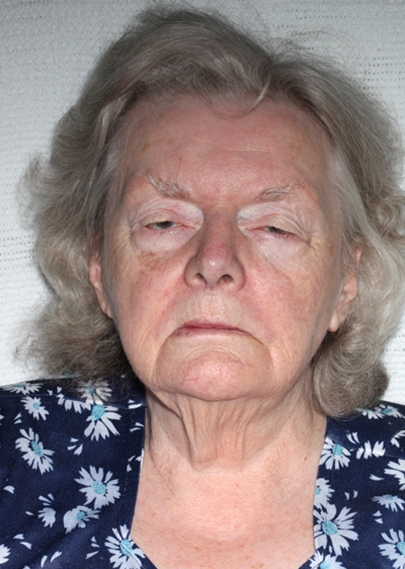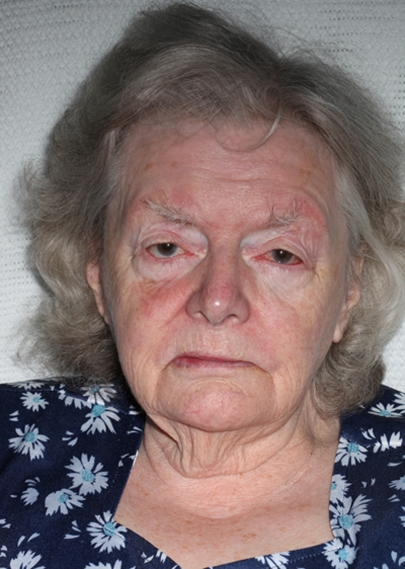This case identifies a little-known, cheap, reliable, bedside test that can aid the diagnosis of myasthenia gravis.
Introduction
Hospital can be a very frightening place for patients. As clinicians we can become complacent to the trepidation that some patients face on a daily basis as we move from patient to patient in our clinical comfort zone. One of the biggest fears that patients are subject to is the anticipation of potentially painful and invasive clinical investigations. As empathetic, caring doctors we attempt to make each of our investigations as painless and non-invasive as possible, but even the simplest tests can involve seemingly minor intrusions for some patients. Some of our most ‘non-invasive’ radiological tests can involve the use of the dreaded needle, and needle phobia affects around 10% of all patients seen.1 So the ideal investigation should be non-invasive, painless, cheap, have good sensitivity and specificity, and be able to be performed at the bedside. This case shows the application of one particular bedside test that is often overlooked by health professionals which can be an easily-performed resource to ensure treatable and potentially life-threatening conditions are not overlooked.
Case report
This is the case of a 78-year-old woman who presented with signs of myasthenia gravis (MG).
This patient had noticed that there was a change in her ability to swallow and she had lost a significant amount of weight. Further inquiry highlighted that these symptoms were worse at the end of the day.
On examination, she had bilateral ptosis with some fatigability and dysarthria. There was no discernable dysphagia (assessed by speech and language therapy services) or dysphonia, and her cough effort was normal. Her oxygen saturation was 94% on room air and there was some associated weakness in eye closure. There was no diplopia and the rest of her neurological and systemic examination was unremarkable. An ice pack test was performed to aid the diagnosis of MG which was strongly positive.
Her biochemical and haematological profiles were normal although acetylcholine receptor antibodies were significantly raised confirming the diagnosis of MG. At this point MuSK antibodies and the Tensilon test were deemed unnecessary. The presence of a thymoma was ruled out with a CT thorax and she was started on regular pyridostigmine and neostigmine (low dose) as required along with prednisolone and admitted to hospital for monitoring with collaboration of a neurologist with good results.
Discussion
The ice pack test is a useful bedside test that can aid in the differentiation of MG from other conditions. The test was used in this case with striking results (Figures 1 and 2). The ice pack test is cheap, safe, and very quick to perform as it can be carried out at the bedside in approximately 3–5 minutes. According to a recent study pertaining to myathenic diplopia, the sensitivity of this test was 76.9% (CI 49.2%–92.5%) for the 5-minute application and the specificity was 98.3% (CI 90.3%–99.9%) with no false-positives reported.2 The diagnosis of the less obvious pure ocular form of the disorder can be greatly improved with the ice pack test as there are often no other features other than a ptosis. The test consists of the application of ice to the eyes for 2–5 minutes, ensuring that the ice is covered to prevent ice burns. If positive, the patient no longer has the characteristic ptosis of MG; in most clinical cases it is reasonable to leave the ice pack for only two minutes as the test is often positive by this point. When leaving the ice pack in situ for over two minutes, the test becomes increasingly uncomfortable for the subject and the reduction of muscle fibre temperature below 22°C will reduce the contractile force of the muscle itself and create potential false-negatives.3 The results of the test can be deemed positive with an improvement of the patient's diplopia or a raise of 2 mm of the palpebral fissure following the removal of the ice pack. The physiological theory behind the test is very simple; it is thought that by cooling the tissues, and more specifically the skeletal muscle fibres, the activity of the acetylcholinesterases are inhibited (laboratory data suggest below 28°C).4,5
Figure 1.
Evidence of bilateral ptosis
Figure 2.
Resolution of the ptosis following application of the ice pack for 2 minutes
This simplistic theory may not be the only factor involved in the resolution of the ptosis; some studies have concluded that it may not be simply cold that can produce a positive ice pack test and that heat can produce similar results, almost certainly by the same physiological effect. These studies went on to hypothesize that the positive result was due to the resting of the eyelids and the increased levels of acetylcholine creating the majority of the improvement. It is important to note in these studies the comparison was made with patients who had undergone at least 15 minutes of eyelid closure.6,7 By the very nature of the disease, rest will improve signs and symptoms but there is a rapid reduction in the time needed to elicit a positive result when ice is used and, therefore, must have some independent physiological effect on the patient's condition. The use of the ice pack test does have some drawbacks. Its use in MG patients with no ptosis is not advised simply because it has little or no effect on ocular muscle contraction and the diagnosis of the condition in this form can be difficult. Patients who present with diplopia and no ptosis show only a subjective improvement of their symptoms and electrophysiological studies highlight that ocular muscles are not affected by the temperatures that the ice pack can safely administer.8 As with the Tensilon test there is also the possibility for the placebo effect. This is why a double-blind process should be adopted to be sure results are accurate.9 It is, therefore, important to realize that in the right sympotomatology the ice pack test can be an effective method of bedside diagnosis of MG and possibly prevent the used of expensive diagnostic medications with many unwanted and possibly dangerous side-effects.
DECLARATIONS
Competing interests
None declared
Funding
None
Ethical approval
Full signed consent was obtained and retained for the purposes of publication; full written consent for the pictures and the patient's express permission for the use of publication were also obtained
Guarantor
CK
Contributorship
All authors contributed equally and approved the final version of the paper
Acknowledgements
None
Reviewer
Daniel Marks
References
- 1.Hamilton JG Needle phobia: a neglected diagnosis. J Fam Pract 1995;41:169–75 [PubMed] [Google Scholar]
- 2.Chatzistefanou KI, Kouris T, Iliakis E, et al. The ice pack test in the differential diagnosis of myasthenic diplopia. Ophthalmology 2009;116:2236–43 [DOI] [PubMed] [Google Scholar]
- 3.Tabassi A, Dehghani A, Saberi B The ice test for diagnosing myasthenia gravis. Acta Medica Iranica 2005;43:60–2 [Google Scholar]
- 4.Sener HO, Yaman A Effect of high temperature on neuromuscular jitter in myasthenia gravis. Eur Neurol 2008;59:179–82 [DOI] [PubMed] [Google Scholar]
- 5.Ricker K, Hertel G, Stodieck S Influence of temperature on neuromuscular transmission in myasthenia gravis. J Neurol 1977;216:273–82 [DOI] [PubMed] [Google Scholar]
- 6.Borenstein S, Desmedt JE Temperature and weather correlates of myasthenic fatigue. Lancet 1974;2:63–6 [DOI] [PubMed] [Google Scholar]
- 7.Rutkove SB, Shefner JM, Wang AK, Ronthal M, Raynor EM High-temperature repetitive nerve stimulation in myasthenia gravis. Muscle Nerve 1998;21:1414–18 [DOI] [PubMed] [Google Scholar]
- 8.Movaghar M, Slavin ML Effect of local heat versus ice on blepharoptosis resulting from ocular myasthenia. Ophathalmology 2000;107:2209–14 [DOI] [PubMed] [Google Scholar]
- 9.Engstrom JW Myasthenia gravis: diagnostic mimics. Semin Neurol 2004;24:141–7 [DOI] [PubMed] [Google Scholar]




